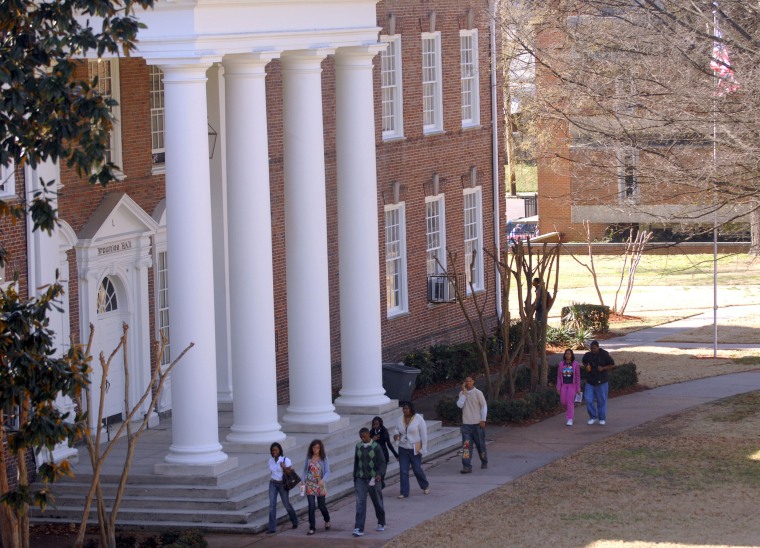Paying for education is not easy for anyone, with four-year tuition and room and board at private colleges averaging nearly $44,000 and close to $20,000 at public colleges.
For black students, particularly those from low- and moderate-income families, the hurdles are even higher. They are twice as likely to borrow for college as their white counterparts, according to a recent study of race and debt by a Brookings Institution senior fellow and others.
In addition, low- and moderate-income black students who borrow wind up about $7,700 deeper in debt than their white fellow students. These black students' debt averaged over $27,000, compared with a little under $20,000 for white students. Asian and Hispanic students had even less debt than whites.
"We were expecting something like this, but I don't know that I expected the magnitude," said Michal Grinstein–Weiss, lead author of the study and an associate professor at Washington University in St. Louis.
Grinstein–Weiss and co–author Samuel Taylor pointed to several potential reasons for the wide gap. One possibility, they said, is that while they were able to measure students with comparable family incomes, they could not fully control for all types of assets and debts. And in general, white families tend to have significantly more wealth.
Some 63 percent of white students who graduate from public four-year colleges and universities borrow to do so, but 81 percent of black graduates go that route, according to a study of student debt by Demos, a public policy research organization. When it comes to associate's degrees, 57 percent of black students borrow, versus 43 percent of whites — and the black students borrow an average of $2,000 more. And that is without controlling for income.
"It's what we call parental transfer. Parents of white students are more able to help them with college, with liquidity and with assets to draw on," Grinstein-Weiss said.
Read More from CNBC: Why Your Backup College May Be the Winner
Another possible reason for the difference in debt levels may be tied to the schools students attend, the researchers said. Black students are disproportionately represented in the ranks of students at for-profit schools, which tend to offer less need-based aid and often are not cheap. An associate's degree at a for-profit school costs only $956 less than a bachelor's degree at a public four-year institution, according to Demos.
Certainly, not all for-profit schools are predatory institutions, but they tend to market to low-income minority students who may have less information about the schools' quality and their graduates' job prospects and less awareness of other options, said Washington University's Taylor.
Another possible reason blacks are more likely to borrow is the history of disparity in access to quality education, Grinstein-Weiss said. Children in low- and moderate-income families may attend lower quality public schools, for example, and the education they receive may limit their college options and their awareness of the possibilities.
One way students can cut college costs is by completing a degree quickly and reducing their time in school. However, low-income students may have other demands, like an outside job, that make that challenging. Another option is to attend a school that offers you a larger financial aid package, even if it is not your first choice.
Read More from CNBC: Who Really Defaults on Student Loans
Saving early and often is also key to reducing the college debt burden, Grinstein-Weiss said, though of course low-income families can find that tough to do.
As for policy options, she suggested making 529 college savings accounts universally available for all American children through incentives for low- and moderate-income families, because these accounts are mostly used by higher-income families. In addition, she said, colleges and universities should provide better support to low-income minority students to help them complete their degrees.
Some 69 percent of black college students who dropped out pointed to debt as a primary reason, well above the 43 percent of white college dropouts, according to the Center for American Progress.
Completing college is still a key to future financial success. "Pursuing higher education to earn a college degree remains a strong predictor of upward mobility and wage growth over a lifetime," Grinstein–Weiss and her colleagues wrote.
